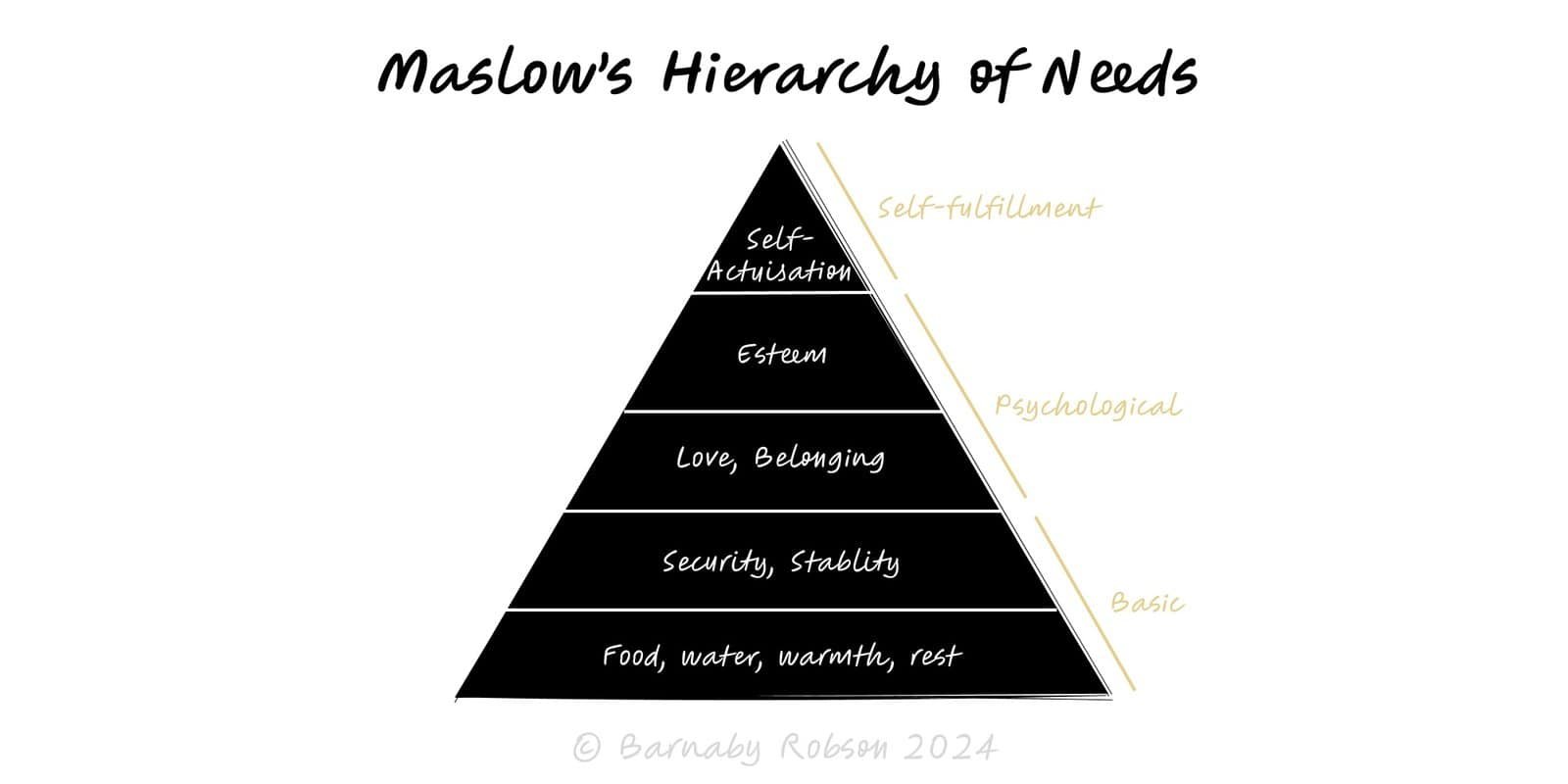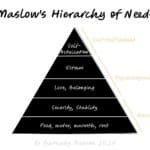Maslow’s Hierarchy of Needs
Abraham H. Maslow

Proposed in 1943 and developed through the 1950s, Maslow argued that human motivation reflects layers of needs. Lower levels are more pressing when unmet; multiple levels can operate at once.
Physiological – basic survival: rest, food, health.
Safety – security, income stability, predictable rules.
Belonging – affiliation, team inclusion, community.
Esteem – status, mastery, recognition, autonomy.
Self-actualisation – realising potential, purpose, creativity. (Some add “self-transcendence” as a further tier.)
Employee experience – sequence interventions: fair pay and safety → team belonging → growth and autonomy.
Change management – reduce safety threats first before appealing to mission.
Product/service design – position offers by the lowest unmet need they solve.
Customer segmentation – craft messages by segment need-state rather than demographics.
Education and L&D – preconditions for learning: psychological safety, belonging, then stretch goals.
Define the cohort (employees, users, customers) and context.
Diagnose unmet needs via surveys, behaviour, and constraint mapping.
Act on the lowest unmet need first; remove frictions before aspiration messaging.
Instrument outcomes (retention, productivity, NPS, activation) and iterate up the stack.
Personalise where feasible; individuals sit at different levels.
Rigid ladder fallacy – levels can overlap; people may pursue esteem or purpose despite insecurity.
Cultural variance – weighting of needs differs across contexts.
Vagueness in measurement – tie each need to observable proxies.
Ignoring constraints – motivation fails if basic frictions (pay, safety, time) persist.
